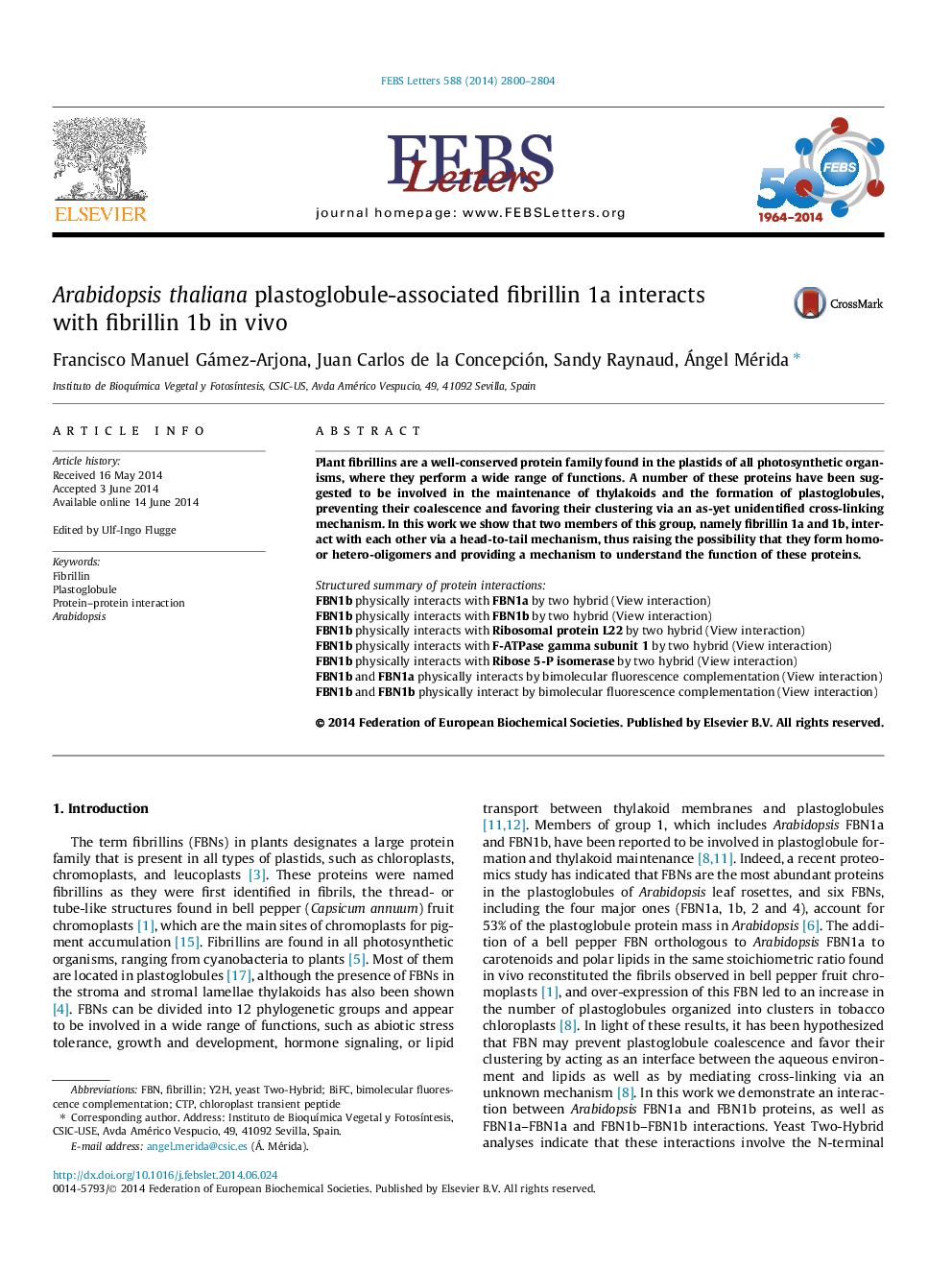| Article ID | Journal | Published Year | Pages | File Type |
|---|---|---|---|---|
| 10870140 | FEBS Letters | 2014 | 5 Pages |
Abstract
Plant fibrillins are a well-conserved protein family found in the plastids of all photosynthetic organisms, where they perform a wide range of functions. A number of these proteins have been suggested to be involved in the maintenance of thylakoids and the formation of plastoglobules, preventing their coalescence and favoring their clustering via an as-yet unidentified cross-linking mechanism. In this work we show that two members of this group, namely fibrillin 1a and 1b, interact with each other via a head-to-tail mechanism, thus raising the possibility that they form homo- or hetero-oligomers and providing a mechanism to understand the function of these proteins.
Keywords
Related Topics
Life Sciences
Agricultural and Biological Sciences
Plant Science
Authors
Francisco Manuel Gámez-Arjona, Juan Carlos de la Concepción, Sandy Raynaud, Ángel Mérida,
